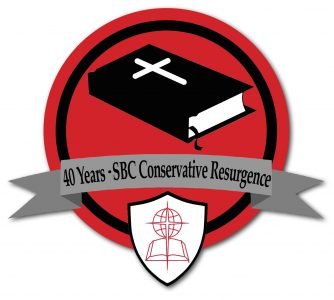EDITOR’S NOTE: This is the sixth article in a year-long series, commemorating the history of the Conservative Resurgence of the Southern Baptist Convention (SBC) in honor of its 40th anniversary. To read previous articles, visit www.mbcpathway.com/ConservativeResurgence.
KETTERING, Ohio (BP) – At age 100, with some memories fading, Walter Davis still remembers the 1962 phone call he received from then-Southern Baptist Convention President Herschel Hobbs to ask if Davis would serve on a committee to revise the Baptist Faith and Message.
“It was an honor to serve on the committee,” Davis told Baptist Press with help from his son Greg.
Walter Davis turned 100 this month and is believed to be the only surviving member of the 1963 Baptist Faith and Message committee.
 In 1962, Davis was among 23 Baptist state convention presidents placed on the Committee to Study Baptist Statement of Faith and Message along with Hobbs as chairman, according to the 1962 SBC Annual. The suggestion to assemble a committee of state convention presidents came as a recommendation from the SBC Executive Committee and was affirmed by messengers. Davis was president of the State Convention of Baptists in Indiana.
In 1962, Davis was among 23 Baptist state convention presidents placed on the Committee to Study Baptist Statement of Faith and Message along with Hobbs as chairman, according to the 1962 SBC Annual. The suggestion to assemble a committee of state convention presidents came as a recommendation from the SBC Executive Committee and was affirmed by messengers. Davis was president of the State Convention of Baptists in Indiana.
Immediate past SBC president Steve Gaines – who served on the committee that drafted the BF&M 2000 and wrote his doctoral dissertation on the 1963 BF&M – said, “I am grateful that Dr. Hobbs and other godly men like Walter Davis were used by the Lord to write the BF&M of 1963.”
Like Hobbs, Davis affirmed biblical inerrancy, yet he recalled that the committee “made a concerted effort to write the document in such a way as to avoid controversy between the conservative and moderate wings of the convention,” according to an email from Greg Davis.
In 1962-63, avoiding SBC controversy was a tall order.
The committee was assembled amid a tumultuous milieu in the convention, according to a 2004 Southern Baptist Theological Seminary doctoral dissertation on the BF&M by A.J. Smith.
In 1961, Midwestern Baptist Theological Seminary professor Ralph Elliott published “The Message of Genesis,” a book questioning the historical accuracy of some stories in Genesis. Many Southern Baptists objected to Elliott’s views. Southern Seminary professor Dale Moody also “rocked the SBC” in the early 1960s by seeming to teach believers could lose their salvation. Both professors were viewed as symptomatic of increasing theological progressivism in SBC seminaries, Smith wrote.
“As president of the Convention,” Smith wrote, “Hobbs found himself faced with a monumental task. He had to find a way to preserve the organic unity of the Convention” by satisfying “the conservative base that sound doctrine would be taught in the schools and published by the Sunday School Board” while also assuring “members of the academy that they would enjoy intellectual and academic freedom.”
The 1963 BF&M represented an effort to accomplish all those tasks, Smith wrote.
When Walter Davis was appointed to the committee, he was 41, a World War II veteran, a Southern Seminary graduate, a father of three and pastor of First Southern Baptist Church in Hammond, Ind. Over the course of his ministry, Davis pastored churches in Kentucky, Indiana, Colorado, Ohio and South Carolina. He retired to Ohio in 1988.
Greg Davis, now 64, remembers his entire family attending the 1962 SBC annual meeting in San Francisco, where the BF&M committee was appointed and apparently held a preliminary gathering. The committee convened again in Nashville in July 1962, then continued its work largely through subcommittees before releasing a draft to the SBC through BP in February 1963.
The convention adopted the BF&M at its 1963 annual meeting in Kansas City.
Among noteworthy phrases employed in the 1963 BF&M, Davis played a role in discussing whether the phrase “truth, without any mixture of error” should be carried over from the 1925 BF&M to describe the Bible, Greg Davis said. The phrase was retained.
Gaines, pastor of Bellevue Baptist Church in Cordova, Tenn., commended the 1963 committee by recalling the challenging circumstances they faced. Hobbs was “an avowed inerrantist,” yet “he was a strong advocate of ‘unity in diversity.’ He wanted the 1963 BF&M to be inclusive enough for all Southern Baptists,” Gaines said in an email.
“Unfortunately, a fairly large group of moderate/liberal Baptist theologians abused the 1963 committee’s efforts to be inclusive. They used language, particularly in the article regarding Scripture, to try to disavow the inerrancy of the Bible,” Gaines said. “Thus, 37 years later Dr. Adrian Rogers led a new committee to revise the 1963 BF&M statement. I served with him on that committee. We made sure that Southern Baptists’ belief in the inerrancy of Scripture was stated so plainly that no one except inerrantists could affirm it.”
More than 50 years after the 1963 BF&M was adopted, Greg Davis is grateful a “prototypical Southern Baptist pastor” like his father had an opportunity to shape a historic Baptist confession of faith.
“May God use [my father’s] story to inspire someone, to try to challenge someone and help us all to realize that those who have come before us have paved the way for where we are today,” Greg Davis said.
Walter Davis and his wife Bess, 92, live in Kettering, Ohio.

